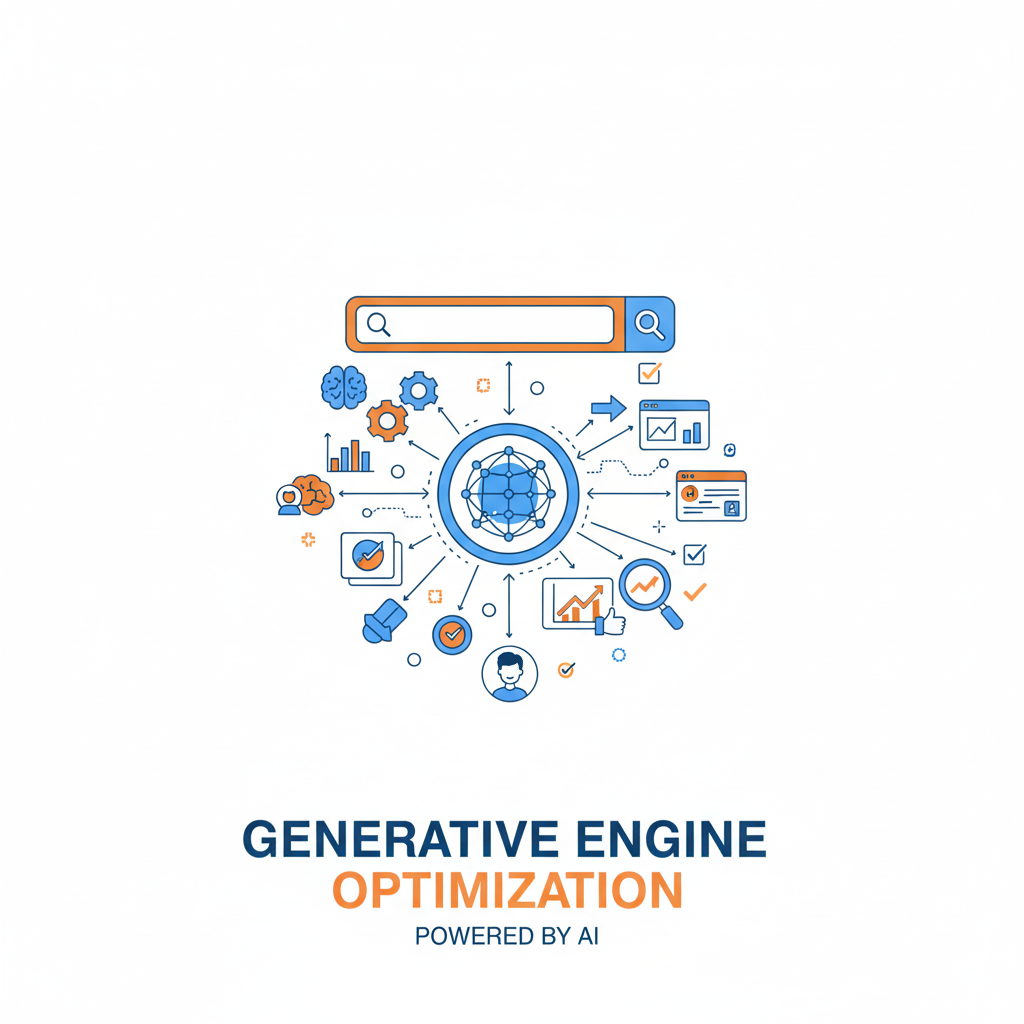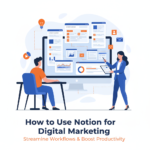
Generative Engine Optimization (GEO): The Future of SEO in the AI Era
Table of Contents
Introduction to Generative Engine Optimization (GEO)
The Shift from Traditional SEO to GEO
Understanding Generative Search Engines (GSEs)
Core Components of GEO
Prompt Engineering for Visibility
Content Structuring for AI Crawlers
Semantic Optimization
Brand Authority Signals
Real-Time Data Feed Integration
GEO vs Traditional SEO: A Comparative Breakdown
How Generative Engines Interpret and Rank Content
GEO Content Strategy: Creating for AI and Humans
Tools and Techniques for GEO
Challenges in Implementing GEO
Future Trends and the Road Ahead
Conclusion
1. Introduction to Generative Engine Optimization (GEO)
In a rapidly evolving digital landscape, search is no longer limited to a list of blue links on Google. The introduction of Generative Search Engines (GSEs) — like ChatGPT, Perplexity AI, Google SGE, and You.com — has disrupted the very foundation of traditional SEO. This paradigm shift requires a new discipline: Generative Engine Optimization (GEO).
GEO is the science and art of optimizing content to be discovered, cited, and recommended by AI-driven generative engines. It blends SEO, content strategy, prompt engineering, AI understanding, and authority building into a unified approach designed for the next generation of search.
2. The Shift from Traditional SEO to GEO
For decades, SEO has focused on optimizing for algorithms like Google’s PageRank and E-A-T (Expertise, Authoritativeness, and Trustworthiness). Success was measured by keyword rankings, organic traffic, and featured snippets.
But Generative AI doesn’t rank pages — it synthesizes answers from across the web. It doesn’t just “index and rank” — it “understands and generates.”
Here’s how the shift looks:
| SEO | GEO |
|---|---|
| Ranking webpages on SERPs | Being referenced in AI-generated responses |
| Keywords and backlinks | Semantic relevance and source credibility |
| Meta tags and crawlability | Structured content and machine readability |
| CTR and dwell time | Relevancy in AI-generated answers |
In this world, GEO is not a replacement for SEO — it’s an evolution of it.
3. Understanding Generative Search Engines (GSEs)
Generative Search Engines leverage LLMs (Large Language Models) to answer user queries directly — synthesizing information from multiple sources in real time or via pre-trained data.
Examples:
ChatGPT (with browsing): Cites recent blog posts, forums, news.
Perplexity AI: Generates summarized answers with citations.
Google SGE (Search Generative Experience): AI-generated snapshots integrated with search.
You.com: Combines AI generation with vertical-specific results.
Key Features of GSEs:
Conversational Interface: Users interact with search in natural language.
Source Attribution: GSEs cite websites, even if not top-ranked in SERPs.
Semantic Understanding: Entities, context, and nuance matter more than keywords.
Intent Matching: GSEs tailor outputs to satisfy intent, not just query match.
4. Core Components of GEO
To optimize for GSEs, marketers must consider five essential pillars:
4.1 Prompt Engineering for Visibility
GSEs mimic prompts — they don’t just look at title tags, but how users ask questions. GEO requires understanding:
How queries are structured
What tone and format users prefer
What kind of content AI prefers to summarize
GEO Tip: Use tools like ChatGPT, Claude, or Perplexity to simulate prompts and see what types of content they generate and cite.
4.2 Content Structuring for AI Crawlers
Unlike Google’s HTML-focused crawlers, LLMs parse text and structure.
Optimize with:
Clear H1-H4 hierarchy
Tables and bullet points
Clean, fact-based intros and summaries
Explicit labeling (e.g., “Pros & Cons”, “Step-by-step guide”)
Structured content is easier for AI to interpret and generate from.
4.3 Semantic Optimization
AI understands concepts more than keywords. Semantic optimization involves:
Using related terms, synonyms, and topical entities
Answering sub-questions within content
Mapping your content to semantic clusters
Tools: Clearscope, SurferSEO, MarketMuse
4.4 Brand Authority Signals
GSEs prioritize trustworthy and consistently cited sources.
Improve authority with:
Strong author bios (with credentials)
External brand mentions
Inclusion in GSE training data (via high domain trust and syndication)
Citations from forums (Reddit, Quora) and niche communities
4.5 Real-Time Data Feed Integration
Engines like Perplexity value freshness. Your content should:
Be updated regularly
Use APIs for real-time data (e.g., stock prices, weather, market trends)
Publish frequently to RSS feeds and push to news syndicators
5. GEO vs Traditional SEO: A Comparative Breakdown
| Feature | Traditional SEO | GEO |
|---|---|---|
| Search Interface | SERPs | Chat-style interface |
| Ranking Signals | Backlinks, Keywords, UX | Semantic clarity, topical depth, source trust |
| Output | Webpage list | Synthesized summary |
| Goal | Rank higher | Get cited or summarized |
| Measurement | Clicks, Impressions, Dwell Time | Mentions, Citations in AI, Referrals from AI |
| Optimization Techniques | On-page SEO, Technical SEO, Link Building | Structured writing, prompt testing, authority building |
6. How Generative Engines Interpret and Rank Content
LLMs don’t “rank” content. They predict the next best word based on training and context. Yet, they show preference for:
High-quality, factually correct content
Content with clear structure and summarization
Widely referenced URLs or authors
Content with original research or unique insights
If your blog is frequently referenced in other articles, AI will recognize its authority. This is emergent SEO — authority through recognition.
7. GEO Content Strategy: Creating for AI and Humans
A strong GEO strategy balances readability for humans with structure for machines.
Content Framework:
Define User Intent
Break queries into: Informational, Transactional, Navigational, Conversational.Structure for Summarization
TL;DR at the top
Use questions as headers
Provide clear bullet points and facts
Answer the Whole Query
Include FAQs, definitions, comparisons, and actionable steps.Embed Expert Quotes
GSEs like authoritative voices.Use Conversational Tones (Where Relevant)
Mimic the tone users might use with AI assistants.
Example:
Query: “Best Project Management Tools for Small Teams”
GEO Content Strategy:
Start with a summary comparison table
Provide use-case-based tool suggestions
Include quotes from managers
Use “For example” to mimic LLM phrasing
8. Tools and Techniques for GEO
Here are essential tools and approaches:
Content Testing Tools
ChatGPT / Claude: Run prompts and check which URLs get cited.
Perplexity.ai: Check real-time AI citations.
Glasp / Feedly: Find trending expert content.
GEO Analytics
Use GPT mentions tracking via Bing/Web Pilot plugins.
Monitor zero-click traffic from AI assistants.
Semantic Tools
MarketMuse, Frase, NeuralText: Topic modeling.
SurferSEO: SERP-based semantic optimization.
Structured Markup
Schema.org enhancements
JSON-LD for entities and FAQs
Citations Tactics
Syndicate content on Medium, Substack, Reddit.
Get cited in academic-style resources or public datasets.
9. Challenges in Implementing GEO
Implementing GEO isn’t easy. Marketers face several hurdles:
Lack of Standard Metrics
There’s no GA or GSC equivalent for AI visibility — yet.
Opaque AI Models
We don’t fully know what LLMs were trained on, making optimization more speculative.
Content Plagiarism Risks
AI might use your content without proper citation.
Brand Voice Preservation
You must balance machine readability with brand personality.
Bias Toward High Authority Domains
New sites face difficulty in getting cited, regardless of quality.
10. Future Trends and the Road Ahead
AI-Aware CMS Platforms
Tools like WordPress will soon integrate GEO-specific plugins (e.g., prompt testing, AI summary simulations).
Search Engine Convergence
Google, Bing, and OpenAI may merge AI with classic ranking, creating hybrid models.
GEO Specialist Roles
New job titles like “AI Visibility Strategist” or “GEO Consultant” will emerge.
Content Licensing Frameworks
Publishers may negotiate how their content appears in AI summaries — including monetization models.
First-Party AI Interfaces
Brands may create their own GPT-powered search experiences — controlling the narrative.
11. Conclusion
Generative Engine Optimization is not just a buzzword — it’s the future of discoverability in a post-SERP world. As LLMs continue to dominate how users interact with information, marketers and content creators must rethink the way they write, structure, and syndicate.
GEO demands strategic clarity, technical adaptation, and semantic intelligence. While traditional SEO won’t disappear overnight, those who adapt to the GEO era will lead the next generation of search.
So, don’t just rank. Get cited. Get summarized. Get discovered — by AI.
Author



